MaryAnn Bernal's Blog, page 141
October 24, 2015
History Trivia - Treaty of Brétigny ratified at Calais
October 24
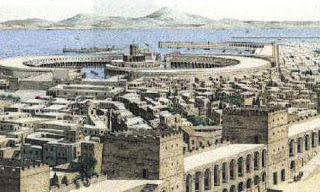
439 Carthage, the leading Roman city in North Africa, fell to Genseric and the Vandals.
1360 The Treaty of Brétigny was ratified at Calais, marking the end of the first phase of the Hundred Years' War.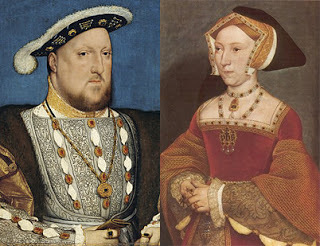
1537 Jane Seymour, the third wife of England's King Henry VIII, died after giving birth to Prince Edward. Prince Edward became King Edward VI.

439 Carthage, the leading Roman city in North Africa, fell to Genseric and the Vandals.

1360 The Treaty of Brétigny was ratified at Calais, marking the end of the first phase of the Hundred Years' War.

1537 Jane Seymour, the third wife of England's King Henry VIII, died after giving birth to Prince Edward. Prince Edward became King Edward VI.
Published on October 24, 2015 00:30
October 23, 2015
Archaeologists Unearth Marble Head of Medusa at Roman Ruins in Turkey
Ancient Origins
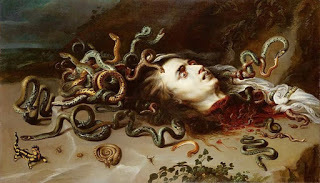 Archaeologists in Turkey have unearthed a marble head of Medusa, the legendary gorgon from Greek mythology with snakes in place of hair who could turn any person to stone with just her gaze. The ancient relic was discovered in the 2,000-year-old archaeological ruins of Antiochia ad Cragum on Mount Cragus in Anatolia, Turkey.
Archaeologists in Turkey have unearthed a marble head of Medusa, the legendary gorgon from Greek mythology with snakes in place of hair who could turn any person to stone with just her gaze. The ancient relic was discovered in the 2,000-year-old archaeological ruins of Antiochia ad Cragum on Mount Cragus in Anatolia, Turkey.
Live Science reports that the head of Medusa was not part of a statue, but was likely incorporated into the pediment of a building, which is believed to have been a small temple.
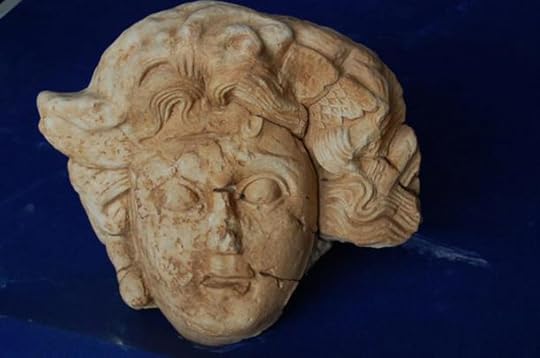 The marble head of Medusa discovered at Antiochia ad Cragum in Turkey. Credit: Michael Hoff, Hixson-Lied professor of art history, University of Nebraska-Lincoln.The Legend of MedusaThe earliest known record about the myth of Medusa and the Gorgons can be found in Hesiod’s Theogony. According to this ancient author, the three sisters, Sthenno, Euryale and Medusa were the children of Phorcys and Ceto, and lived “beyond famed Oceanus at the world’s edge hard by Night”. Of the three, only Medusa was said to be mortal, whilst Sthenno and Euryale were immortal. In addition, Medusa is the most famous of the three, and the story of her demise is also mentioned in passing by Hesiod.
The marble head of Medusa discovered at Antiochia ad Cragum in Turkey. Credit: Michael Hoff, Hixson-Lied professor of art history, University of Nebraska-Lincoln.The Legend of MedusaThe earliest known record about the myth of Medusa and the Gorgons can be found in Hesiod’s Theogony. According to this ancient author, the three sisters, Sthenno, Euryale and Medusa were the children of Phorcys and Ceto, and lived “beyond famed Oceanus at the world’s edge hard by Night”. Of the three, only Medusa was said to be mortal, whilst Sthenno and Euryale were immortal. In addition, Medusa is the most famous of the three, and the story of her demise is also mentioned in passing by Hesiod.
Although Hesiod gives an account of Medusa’s origins and the death of Medusa at the hands of Perseus, he does not say more about her. By contrast, a more comprehensive account of Perseus and Medusa can be found in Ovid’s Metamorphoses. In this work, Ovid describes Medusa as originally being a beautiful maiden. Her beauty caught the eye of Poseidon, who desired her and proceeded to ravage her in Athena’s shrine. The goddess then sought vengeance by transforming Medusa’s hair into snakes, so that anyone who gazed at her directly would be turned into stone.
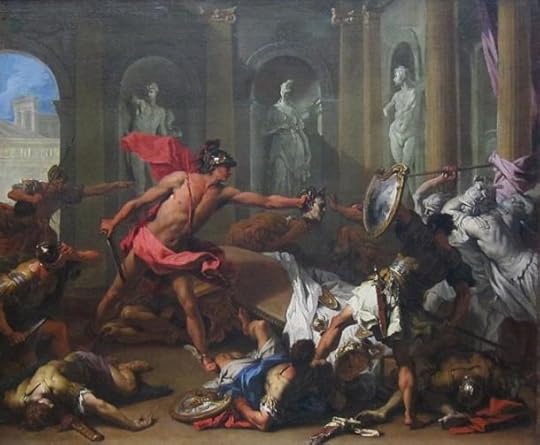 Perseus with the Head of Medusa after he had slain her, by Sebastiano Ricci (
Wikimedia Commons
)Medusa as a Force of ProtectionAlthough Medusa is commonly regarded as a monster, her head is often seen as a protective amulet that would keep evil away. Thus, the image of Medusa’s head can be seen in numerous Greek and subsequent Roman artifacts such as shields, breastplates, mosaics, and statues. There are also numerous coins that bear not only the imagery of Perseus holding the head of Medusa, but also the head in its own right.
Perseus with the Head of Medusa after he had slain her, by Sebastiano Ricci (
Wikimedia Commons
)Medusa as a Force of ProtectionAlthough Medusa is commonly regarded as a monster, her head is often seen as a protective amulet that would keep evil away. Thus, the image of Medusa’s head can be seen in numerous Greek and subsequent Roman artifacts such as shields, breastplates, mosaics, and statues. There are also numerous coins that bear not only the imagery of Perseus holding the head of Medusa, but also the head in its own right.
The Legend of Medusa and the GorgonsPerseus: Powerful Demigod with Mighty WeaponsMycenae, the Ancient city founded by Perseus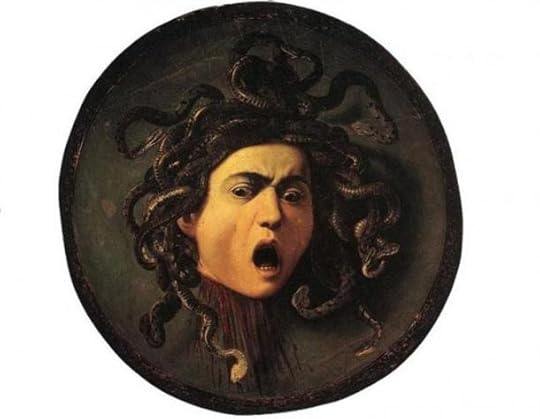 Caravaggio’s Medusa. Photo source: Wikimedia.The Ancient City of Antiochia ad CragumThe marble Medusa head was discovered in the ruins of the ancient city known as Antiochia ad Cragum, which was founded in around 170 BC by Antiochus IV Epiphanes, a Greek king of the Seleucid Empire.
Caravaggio’s Medusa. Photo source: Wikimedia.The Ancient City of Antiochia ad CragumThe marble Medusa head was discovered in the ruins of the ancient city known as Antiochia ad Cragum, which was founded in around 170 BC by Antiochus IV Epiphanes, a Greek king of the Seleucid Empire.
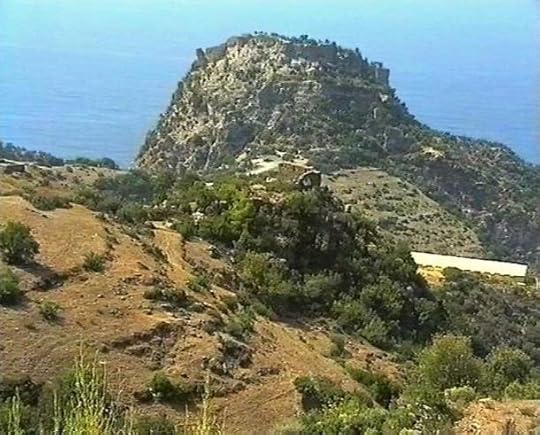 Some ruins at Antiochia ad Cragum (
Public domain
)Michael Hoff, a University of Nebraska–Lincoln art historian and director of the excavations, told Live Science, that the finding is surprising since the image of Medusa would have been considered idolatrous by the Christians, who later came to settle at the site. Anything considered pagan was typically smashed into pieces, but somehow the Medusa head survived the destruction.
Some ruins at Antiochia ad Cragum (
Public domain
)Michael Hoff, a University of Nebraska–Lincoln art historian and director of the excavations, told Live Science, that the finding is surprising since the image of Medusa would have been considered idolatrous by the Christians, who later came to settle at the site. Anything considered pagan was typically smashed into pieces, but somehow the Medusa head survived the destruction.
Featured image: Head of Medusa by Peter Paul Rubens ( Wikimedia Commons )
By April Holloway
 Archaeologists in Turkey have unearthed a marble head of Medusa, the legendary gorgon from Greek mythology with snakes in place of hair who could turn any person to stone with just her gaze. The ancient relic was discovered in the 2,000-year-old archaeological ruins of Antiochia ad Cragum on Mount Cragus in Anatolia, Turkey.
Archaeologists in Turkey have unearthed a marble head of Medusa, the legendary gorgon from Greek mythology with snakes in place of hair who could turn any person to stone with just her gaze. The ancient relic was discovered in the 2,000-year-old archaeological ruins of Antiochia ad Cragum on Mount Cragus in Anatolia, Turkey.Live Science reports that the head of Medusa was not part of a statue, but was likely incorporated into the pediment of a building, which is believed to have been a small temple.
 The marble head of Medusa discovered at Antiochia ad Cragum in Turkey. Credit: Michael Hoff, Hixson-Lied professor of art history, University of Nebraska-Lincoln.The Legend of MedusaThe earliest known record about the myth of Medusa and the Gorgons can be found in Hesiod’s Theogony. According to this ancient author, the three sisters, Sthenno, Euryale and Medusa were the children of Phorcys and Ceto, and lived “beyond famed Oceanus at the world’s edge hard by Night”. Of the three, only Medusa was said to be mortal, whilst Sthenno and Euryale were immortal. In addition, Medusa is the most famous of the three, and the story of her demise is also mentioned in passing by Hesiod.
The marble head of Medusa discovered at Antiochia ad Cragum in Turkey. Credit: Michael Hoff, Hixson-Lied professor of art history, University of Nebraska-Lincoln.The Legend of MedusaThe earliest known record about the myth of Medusa and the Gorgons can be found in Hesiod’s Theogony. According to this ancient author, the three sisters, Sthenno, Euryale and Medusa were the children of Phorcys and Ceto, and lived “beyond famed Oceanus at the world’s edge hard by Night”. Of the three, only Medusa was said to be mortal, whilst Sthenno and Euryale were immortal. In addition, Medusa is the most famous of the three, and the story of her demise is also mentioned in passing by Hesiod.Although Hesiod gives an account of Medusa’s origins and the death of Medusa at the hands of Perseus, he does not say more about her. By contrast, a more comprehensive account of Perseus and Medusa can be found in Ovid’s Metamorphoses. In this work, Ovid describes Medusa as originally being a beautiful maiden. Her beauty caught the eye of Poseidon, who desired her and proceeded to ravage her in Athena’s shrine. The goddess then sought vengeance by transforming Medusa’s hair into snakes, so that anyone who gazed at her directly would be turned into stone.
 Perseus with the Head of Medusa after he had slain her, by Sebastiano Ricci (
Wikimedia Commons
)Medusa as a Force of ProtectionAlthough Medusa is commonly regarded as a monster, her head is often seen as a protective amulet that would keep evil away. Thus, the image of Medusa’s head can be seen in numerous Greek and subsequent Roman artifacts such as shields, breastplates, mosaics, and statues. There are also numerous coins that bear not only the imagery of Perseus holding the head of Medusa, but also the head in its own right.
Perseus with the Head of Medusa after he had slain her, by Sebastiano Ricci (
Wikimedia Commons
)Medusa as a Force of ProtectionAlthough Medusa is commonly regarded as a monster, her head is often seen as a protective amulet that would keep evil away. Thus, the image of Medusa’s head can be seen in numerous Greek and subsequent Roman artifacts such as shields, breastplates, mosaics, and statues. There are also numerous coins that bear not only the imagery of Perseus holding the head of Medusa, but also the head in its own right.The Legend of Medusa and the GorgonsPerseus: Powerful Demigod with Mighty WeaponsMycenae, the Ancient city founded by Perseus
 Caravaggio’s Medusa. Photo source: Wikimedia.The Ancient City of Antiochia ad CragumThe marble Medusa head was discovered in the ruins of the ancient city known as Antiochia ad Cragum, which was founded in around 170 BC by Antiochus IV Epiphanes, a Greek king of the Seleucid Empire.
Caravaggio’s Medusa. Photo source: Wikimedia.The Ancient City of Antiochia ad CragumThe marble Medusa head was discovered in the ruins of the ancient city known as Antiochia ad Cragum, which was founded in around 170 BC by Antiochus IV Epiphanes, a Greek king of the Seleucid Empire.“There still stand substantial remains of baths, a market, a colonnaded street with gateway, a large early Christian basilica, monumental tombs, and a temple, along with several unidentified structures,” reports the Antiochia ad Cragum Archaeological Research Project. “Antiochia is mentioned by several ancient sources as an important Roman commercial center and during the Byzantine era the city was a seat of a Christian bishopric.”
 Some ruins at Antiochia ad Cragum (
Public domain
)Michael Hoff, a University of Nebraska–Lincoln art historian and director of the excavations, told Live Science, that the finding is surprising since the image of Medusa would have been considered idolatrous by the Christians, who later came to settle at the site. Anything considered pagan was typically smashed into pieces, but somehow the Medusa head survived the destruction.
Some ruins at Antiochia ad Cragum (
Public domain
)Michael Hoff, a University of Nebraska–Lincoln art historian and director of the excavations, told Live Science, that the finding is surprising since the image of Medusa would have been considered idolatrous by the Christians, who later came to settle at the site. Anything considered pagan was typically smashed into pieces, but somehow the Medusa head survived the destruction.Featured image: Head of Medusa by Peter Paul Rubens ( Wikimedia Commons )
By April Holloway
Published on October 23, 2015 03:00
History Trivia - Second Battle of Philippi – Mark Antony victorious
October 23
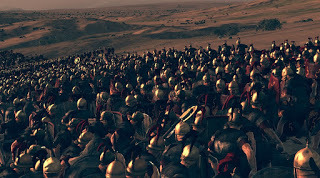
42 BC Roman Republican civil wars: Second Battle of Philippi – Mark Antony and Octavian decisively defeated Brutus' army. Brutus committed suicide.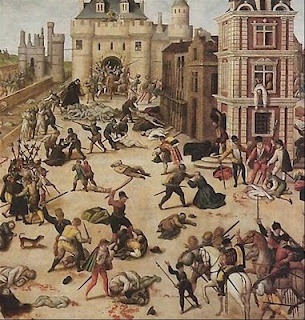
1641 Rebellion in Ireland: Catholics, under Phelim O'Neil, rose against the Protestants and massacred men, women and children to the number of 40,000 (also reported at 100,000).

42 BC Roman Republican civil wars: Second Battle of Philippi – Mark Antony and Octavian decisively defeated Brutus' army. Brutus committed suicide.

1641 Rebellion in Ireland: Catholics, under Phelim O'Neil, rose against the Protestants and massacred men, women and children to the number of 40,000 (also reported at 100,000).
Published on October 23, 2015 01:00
October 22, 2015
10 things you (probably) didn’t know about Henry V and the battle of Agincourt
History Extra
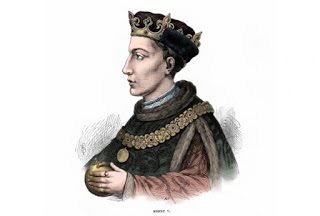 Henry V © Lebrecht Music and Arts Photo Library / Alamy
Henry V © Lebrecht Music and Arts Photo Library / Alamy
Now, in the 600th anniversary year of the famous battle, Teresa Cole explores the life and legacy of the medieval warrior king in her new book, Henry V: The Life of the Warrior King & the Battle of Agincourt 1415. Here, writing for History Extra, she reveals 10 lesser-known facts about Henry V…
1) Nobody knows when he was bornHenry V was born at Monmouth castle, perched high above the River Monnow, but there is no record of his birth, and even the year is uncertain. Some say his birthday was 9 August 1387, but an alternative date is 16 September 1386. The latter comes from a horoscope drawn up for the king and apparently commissioned by him just before the Agincourt campaign.
However, the French astrologer who drew the horoscope was later accused in Paris of being an English spy, and it is possible the work was just an excuse for the man to come to England and meet with Henry. The king apparently showed no interest in the horoscope afterwards.
2) He was in Ireland with Richard II when his father seized the throneWhen his father, Henry Bolingbroke, seized the throne, the young Henry was in the custody of King Richard II as a hostage for his father’s good behaviour. Had it been a few centuries earlier he could have expected, at the least, to be blinded if not put to death.
Richard, however, was made of different stuff. He had treated the boy well, spent time with him, took him with him on the expedition to Ireland, and even knighted him on the way. Even when he heard of the attack on his crown, he made no threats against him.
It seems that, in return, Henry saw Richard as something of a father figure. According to one account, when his own father – now secure in the palace of Westminster – sent for him, Henry went instead to Richard in the Tower, and only at his insistence went on to his father. When Henry himself became king he had Richard’s body exhumed from its obscure grave and reburied in Westminster Abbey.
3) His first battle was nearly his lastHenry’s first battle [before he was king] was not against the French, but the English. At Shrewsbury on 21 July 1403 the 16-year-old Henry, Prince of Wales, lined up alongside his father to face the forces of the rebel lord, Henry Percy.
At Shrewsbury Henry led his forces well, and made a major contribution to the victory. In the course of the battle, however, he was shot in the face by an arrow that entered below his eye, missed both brain and spinal cord and stuck in the bone at the back of the skull. To remove the embedded arrowhead, special tongs had to be designed, made and carefully inserted nearly six inches into the wound to grip and extract the metal.
It took a further three weeks to cleanse and close up the hole – and all this in the days before anaesthetics.
4) He learnt his military tactics in WalesThe tactics used by Henry V in his French wars were first tried out in Wales. At about the same time that he became Prince of Wales (aged 13), Owain Glyndwr began a violent rebellion against the English. The king’s policy of attack and withdraw was unsuccessful, and Glyndwr rapidly spread his influence from north Wales to almost the whole country.
When, however, in his late teens, Henry was given a freer hand, he changed tactics. Now he concentrated on taking strategic castles which were then garrisoned and held securely, cutting off supply routes and enabling further advances. Gradually Glendower was forced back to two strongholds on the west coast – Aberystwyth and Harlech. Each was besieged and battered by traditional siege weapons, and, for what is thought to have been the first time in Britain, cannon were used.
Eventually Glyndwr’s supporters were starved into submission, and though Glyndwr himself was never captured, the war was ended. A few years after this, using the same tactics, Henry conquered first Normandy, and then a large part of northern France.
5) Legend has it his claim to France resulted from a Templar’s curseIn 1307, Philippe IV of France seized the property of the wealthy Order of Knights Templar, and tortured and put to death its members. The story is told that, as the last Grand Master died, he laid a curse on Philippe and his descendants, saying the king would die within a year. Eight months later Philippe died in a hunting accident.
Two years after that his son, Louis X died, aged 26, after a strenuous game of tennis. His son, John I, born five months later, lived only five days, and in the next 12 years the last direct male descendants of Philippe also died.
Those closest in line to the empty throne were Jeanne, daughter of Louis and Jeanne of Navarre, and Edward III of England, whose mother was Philippe’s daughter. Navarre and England, however, were equally unacceptable, and Philippe de Valois, a cousin of the last king [Charles IV], was crowned instead. Edward challenged this starting the so-called Hundred Years’ War, and it was his claim that was later revived by Henry V.

The battle of Agincourt. © 19th era / Alamy
6) Dick Whittington contributed to Henry’s warsA large slice of the money needed to pay for the French campaigns was raised by loans rather than taxes. In May 1415 Henry sent letters appealing for money to individuals, and to towns. Typically a town would decide on the amount of the loan, and then every citizen would be assessed to contribute even a few pennies to the sum agreed.
Royal jewels, plate and regalia were handed out as security for repayment. Not only did this raise a large amount of money, but it meant almost everyone had an interest in the outcome of the French wars.
One individual in London who lent money to Henry was Sir Richard Whittington, a rich cloth merchant who was indeed the same Dick Whittington as in the children’s story. He was lord mayor of London three times.
7) ‘The Dauphin’ was three different peopleWith the French king subject to fits of madness, his son the dauphin plays a prominent role in the accounts of Henry’s campaigns. The impression is often given that ‘the dauphin’, who, if Shakespeare is to be believed, insulted Henry with a gift of tennis balls [a sign of mockery], was the same ‘dauphin’ who would later be crowned Charles VII by Joan of Arc at Rheims cathedral.
In fact there were three different dauphins over this period. The first was Louis of tennis ball fame, who, though kept away from the battle of Agincourt, died soon after, possibly of dysentery or pneumonia. Louis was followed by his brother John, who was the son-in-law of the Burgundian leader, John the Fearless.
This dauphin died suddenly in April 1417, some said by poison, and he was succeeded by his last remaining brother, Charles, who after the death of Henry V, and with a great deal of help from his mother-in-law, Yolande of Aragon, finally became Charles VII in 1429.
8) A French commander told Henry how to win at AgincourtThe French plan at Agincourt was to use massed cavalry to charge down the English archers. Henry V learnt of this from a French prisoner some days before the battle, and immediately took steps to counter it: every archer was to drive a sharpened stake into the ground in front of him on the battlefield to stop a charging horse.
The plan worked very well but was probably not Henry’s own plan. The French commander, Marshal Boucicaut, had earlier fought against the Turks at the battle of Nicopolis, and had seen a cavalry charge halted by a similar mass of sharpened stakes. He had written an account of this and it is possible that either Henry himself, or perhaps one of his commanders, Edward Duke of York, had read it and remembered the effectiveness of the tactic.
9) A number of those who died at Agincourt were suffocatedThere are no reliable figures for the size of the French army at Agincourt, but they numbered many thousands, and in their eagerness to get at the English most of the leading figures were crammed into the front ranks.
When the action was triggered by a flight of arrows from the English side, the French charged forward in accordance with their battle plan. Funnelled into a narrower part of the field where Henry had taken up his position, the French were crammed together, and though many did not reach the English ranks, many more did. As these were cut down, those pressing behind climbed over them, and anyone who slipped or fell in the muddy ground had little chance of getting up again.
As the battle progressed the pile of bodies rose higher, and any who were wounded or simply knocked over were crushed beneath the weight of those coming behind. Very few were found alive when the heaps of bodies were at last unpicked after the battle.
10) Henry V died of dysentery and is buried in Westminster AbbeySieges were dangerous places for both those inside and out: insanitary conditions and a shortage of fresh water frequently led to outbreaks of dysentery among the besieged and the besiegers, and it is likely that Henry contracted his final illness at the siege of Meaux – though it took some time to weaken him and claim his life.
His body was brought back to England for burial, and after considerable ceremony he was laid to rest behind the altar in Westminster Abbey, close to his hero Edward the Confessor, and within yards of the tomb of Richard II. A magnificent chapel was erected around him, and a life-sized effigy placed on the tomb with a head of solid silver.
Sadly the silver was stolen in the 16th century, and the later Tudor building dwarfs his resting place. Thousands of tourists pass the spot without realising he is there, and all that can be seen of the effigy is the soles of its feet.
To find out more about Teresa Cole’s Henry V: The Life of the Warrior King & the Battle of Agincourt 1415 (Amberley Publishing, 2015) click here.
 Henry V © Lebrecht Music and Arts Photo Library / Alamy
Henry V © Lebrecht Music and Arts Photo Library / Alamy Now, in the 600th anniversary year of the famous battle, Teresa Cole explores the life and legacy of the medieval warrior king in her new book, Henry V: The Life of the Warrior King & the Battle of Agincourt 1415. Here, writing for History Extra, she reveals 10 lesser-known facts about Henry V…
1) Nobody knows when he was bornHenry V was born at Monmouth castle, perched high above the River Monnow, but there is no record of his birth, and even the year is uncertain. Some say his birthday was 9 August 1387, but an alternative date is 16 September 1386. The latter comes from a horoscope drawn up for the king and apparently commissioned by him just before the Agincourt campaign.
However, the French astrologer who drew the horoscope was later accused in Paris of being an English spy, and it is possible the work was just an excuse for the man to come to England and meet with Henry. The king apparently showed no interest in the horoscope afterwards.
2) He was in Ireland with Richard II when his father seized the throneWhen his father, Henry Bolingbroke, seized the throne, the young Henry was in the custody of King Richard II as a hostage for his father’s good behaviour. Had it been a few centuries earlier he could have expected, at the least, to be blinded if not put to death.
Richard, however, was made of different stuff. He had treated the boy well, spent time with him, took him with him on the expedition to Ireland, and even knighted him on the way. Even when he heard of the attack on his crown, he made no threats against him.
It seems that, in return, Henry saw Richard as something of a father figure. According to one account, when his own father – now secure in the palace of Westminster – sent for him, Henry went instead to Richard in the Tower, and only at his insistence went on to his father. When Henry himself became king he had Richard’s body exhumed from its obscure grave and reburied in Westminster Abbey.
3) His first battle was nearly his lastHenry’s first battle [before he was king] was not against the French, but the English. At Shrewsbury on 21 July 1403 the 16-year-old Henry, Prince of Wales, lined up alongside his father to face the forces of the rebel lord, Henry Percy.
At Shrewsbury Henry led his forces well, and made a major contribution to the victory. In the course of the battle, however, he was shot in the face by an arrow that entered below his eye, missed both brain and spinal cord and stuck in the bone at the back of the skull. To remove the embedded arrowhead, special tongs had to be designed, made and carefully inserted nearly six inches into the wound to grip and extract the metal.
It took a further three weeks to cleanse and close up the hole – and all this in the days before anaesthetics.
4) He learnt his military tactics in WalesThe tactics used by Henry V in his French wars were first tried out in Wales. At about the same time that he became Prince of Wales (aged 13), Owain Glyndwr began a violent rebellion against the English. The king’s policy of attack and withdraw was unsuccessful, and Glyndwr rapidly spread his influence from north Wales to almost the whole country.
When, however, in his late teens, Henry was given a freer hand, he changed tactics. Now he concentrated on taking strategic castles which were then garrisoned and held securely, cutting off supply routes and enabling further advances. Gradually Glendower was forced back to two strongholds on the west coast – Aberystwyth and Harlech. Each was besieged and battered by traditional siege weapons, and, for what is thought to have been the first time in Britain, cannon were used.
Eventually Glyndwr’s supporters were starved into submission, and though Glyndwr himself was never captured, the war was ended. A few years after this, using the same tactics, Henry conquered first Normandy, and then a large part of northern France.
5) Legend has it his claim to France resulted from a Templar’s curseIn 1307, Philippe IV of France seized the property of the wealthy Order of Knights Templar, and tortured and put to death its members. The story is told that, as the last Grand Master died, he laid a curse on Philippe and his descendants, saying the king would die within a year. Eight months later Philippe died in a hunting accident.
Two years after that his son, Louis X died, aged 26, after a strenuous game of tennis. His son, John I, born five months later, lived only five days, and in the next 12 years the last direct male descendants of Philippe also died.
Those closest in line to the empty throne were Jeanne, daughter of Louis and Jeanne of Navarre, and Edward III of England, whose mother was Philippe’s daughter. Navarre and England, however, were equally unacceptable, and Philippe de Valois, a cousin of the last king [Charles IV], was crowned instead. Edward challenged this starting the so-called Hundred Years’ War, and it was his claim that was later revived by Henry V.

The battle of Agincourt. © 19th era / Alamy
6) Dick Whittington contributed to Henry’s warsA large slice of the money needed to pay for the French campaigns was raised by loans rather than taxes. In May 1415 Henry sent letters appealing for money to individuals, and to towns. Typically a town would decide on the amount of the loan, and then every citizen would be assessed to contribute even a few pennies to the sum agreed.
Royal jewels, plate and regalia were handed out as security for repayment. Not only did this raise a large amount of money, but it meant almost everyone had an interest in the outcome of the French wars.
One individual in London who lent money to Henry was Sir Richard Whittington, a rich cloth merchant who was indeed the same Dick Whittington as in the children’s story. He was lord mayor of London three times.
7) ‘The Dauphin’ was three different peopleWith the French king subject to fits of madness, his son the dauphin plays a prominent role in the accounts of Henry’s campaigns. The impression is often given that ‘the dauphin’, who, if Shakespeare is to be believed, insulted Henry with a gift of tennis balls [a sign of mockery], was the same ‘dauphin’ who would later be crowned Charles VII by Joan of Arc at Rheims cathedral.
In fact there were three different dauphins over this period. The first was Louis of tennis ball fame, who, though kept away from the battle of Agincourt, died soon after, possibly of dysentery or pneumonia. Louis was followed by his brother John, who was the son-in-law of the Burgundian leader, John the Fearless.
This dauphin died suddenly in April 1417, some said by poison, and he was succeeded by his last remaining brother, Charles, who after the death of Henry V, and with a great deal of help from his mother-in-law, Yolande of Aragon, finally became Charles VII in 1429.
8) A French commander told Henry how to win at AgincourtThe French plan at Agincourt was to use massed cavalry to charge down the English archers. Henry V learnt of this from a French prisoner some days before the battle, and immediately took steps to counter it: every archer was to drive a sharpened stake into the ground in front of him on the battlefield to stop a charging horse.
The plan worked very well but was probably not Henry’s own plan. The French commander, Marshal Boucicaut, had earlier fought against the Turks at the battle of Nicopolis, and had seen a cavalry charge halted by a similar mass of sharpened stakes. He had written an account of this and it is possible that either Henry himself, or perhaps one of his commanders, Edward Duke of York, had read it and remembered the effectiveness of the tactic.
9) A number of those who died at Agincourt were suffocatedThere are no reliable figures for the size of the French army at Agincourt, but they numbered many thousands, and in their eagerness to get at the English most of the leading figures were crammed into the front ranks.
When the action was triggered by a flight of arrows from the English side, the French charged forward in accordance with their battle plan. Funnelled into a narrower part of the field where Henry had taken up his position, the French were crammed together, and though many did not reach the English ranks, many more did. As these were cut down, those pressing behind climbed over them, and anyone who slipped or fell in the muddy ground had little chance of getting up again.
As the battle progressed the pile of bodies rose higher, and any who were wounded or simply knocked over were crushed beneath the weight of those coming behind. Very few were found alive when the heaps of bodies were at last unpicked after the battle.
10) Henry V died of dysentery and is buried in Westminster AbbeySieges were dangerous places for both those inside and out: insanitary conditions and a shortage of fresh water frequently led to outbreaks of dysentery among the besieged and the besiegers, and it is likely that Henry contracted his final illness at the siege of Meaux – though it took some time to weaken him and claim his life.
His body was brought back to England for burial, and after considerable ceremony he was laid to rest behind the altar in Westminster Abbey, close to his hero Edward the Confessor, and within yards of the tomb of Richard II. A magnificent chapel was erected around him, and a life-sized effigy placed on the tomb with a head of solid silver.
Sadly the silver was stolen in the 16th century, and the later Tudor building dwarfs his resting place. Thousands of tourists pass the spot without realising he is there, and all that can be seen of the effigy is the soles of its feet.
To find out more about Teresa Cole’s Henry V: The Life of the Warrior King & the Battle of Agincourt 1415 (Amberley Publishing, 2015) click here.
Published on October 22, 2015 03:00
History Trivia - Temple of Apollo at Daphne destroyed by fire
October 22
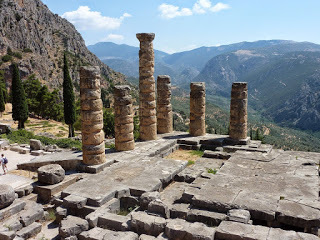
362 A mysterious fire destroyed the temple of Apollo at Daphne outside Antioch.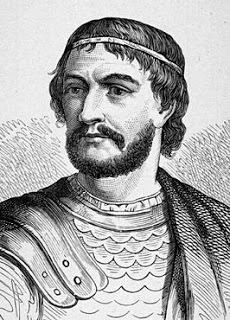
741 King Charles Martel, the grandfather of the great emperor Charlemagne, died at age 53.

362 A mysterious fire destroyed the temple of Apollo at Daphne outside Antioch.

741 King Charles Martel, the grandfather of the great emperor Charlemagne, died at age 53.
Published on October 22, 2015 01:30
October 21, 2015
Stunning 16th Century Church Emerges from Mexican Reservoir after Drought
Ancient Origins
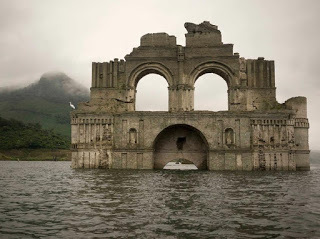
The remnants of a 400-year-old Spanish colonial church have emerged from the depths of the Nezahualcoyotl reservoir in Chiapas, Mexico, after a drought caused the water level to drop by 82 feet (25 meters). The church, known as the Temple of Santiago or Temple of Quechula was originally lost to the waters of the reservoir in 1966 when the dam was finished on the Grijalva River. Tourists are now flocking to the site to catch a glimpse of the Temple before it disappears beneath the water once again.
The church measures 183 feet long (61 meters) and 42 feet (14 meters) wide, while the bell tower reaches 48 feet (16 meters) above the ground.
The Temple of Quechula was first built in the mid-1600s by a group of monks headed by Friar Bartolome de la Casas. The Dominican friars also constructed a town around the church, which they called Quechala and Friar Bartolome made himself Bishop.
Mexico News Daily reports that the region was inhabited by the Zoque people, predecessors of the Olmec. In 1494, they were invaded and defeated by the Aztecs before the Spanish moved into Zoque lands in 1523. Under Spanish rule, their population was decimated by disease and the toils of hard labor, and their land was parcelled out among the settlers.
Friar Bartolome initially supported the colonization and subjugation of the Zoque, but later took an opposing view and went on to write about the horrors of colonization.
Bartolome had high hopes for the town of Quechala, expecting it to one day become a great city. However, a plague hit the town in 1773, forcing the inhabitants to flee. The town and the church were left abandoned.
When the dam on the Grijalva River was completed, not just the colonial church, but the whole town and surrounding villages and archaeological sites were submerged.
The Associated Press (AP) reports that tourists are now flocking to the site to catch a glimpse of the temple before it disappears once again. Local fisherman Leonel Mendoza has been taking people to the site by boat in droves.
According to AP, it is only the second time that a drop in water level has revealed the church. The first time was in 2002 when the water decreased so much that people were able to walk inside the church.
People are taking the opportunity while they can to explore the church as it is not known when it may emerge from the water once again.
Featured image: A photograph of the colonial church that has emerged out of the Nezahualcoyotl reservoir in Chiapas, Mexico. Credit: Associated Press.
By April Holloway
Published on October 21, 2015 03:30
History Trivia - Henry VIII of England named Defender of the Faith
October 21

1096 The People's Crusade (part of the First Crusade also known as the Peasants' Crusade or the Paupers' Crusade), led by Peter the Hermit, was slaughtered by Seljuk Turks at the Battle of Civetot.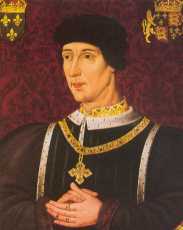
1422 when Henry VI was eight months old he succeeded to the English throne, and shortly afterwards, by the death in 1422 of his maternal grandfather, Charles VI, he became titular king of France.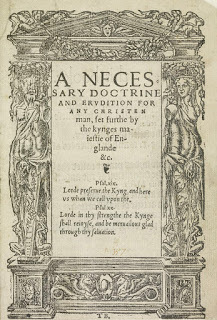
1529 The Pope named Henry VIII of England Defender of the Faith after he defended the seven sacraments against Luther.

1096 The People's Crusade (part of the First Crusade also known as the Peasants' Crusade or the Paupers' Crusade), led by Peter the Hermit, was slaughtered by Seljuk Turks at the Battle of Civetot.

1422 when Henry VI was eight months old he succeeded to the English throne, and shortly afterwards, by the death in 1422 of his maternal grandfather, Charles VI, he became titular king of France.

1529 The Pope named Henry VIII of England Defender of the Faith after he defended the seven sacraments against Luther.
Published on October 21, 2015 01:30
October 20, 2015
Archaeologists Launch Official Search for Treasure of King Alaric Sought by the Nazis
Ancient Origins
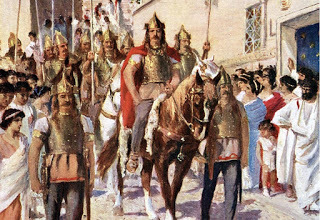 The local and provincial administration of Cosenza in Italy has launched a plan to systematically search for the treasure hoard of Alaric, King of the Visigoths, who looted the riches during his sack of Rome in the 5th century. Italian archaeologists will be utilizing the latest technological innovations in their search for the treasure, which legend says was buried alongside Alaric somewhere near the confluence of two rivers in Cosenza. Adolph Hitler was obsessed with the goal of finding the hidden loot, but the Nazis never located it.
The local and provincial administration of Cosenza in Italy has launched a plan to systematically search for the treasure hoard of Alaric, King of the Visigoths, who looted the riches during his sack of Rome in the 5th century. Italian archaeologists will be utilizing the latest technological innovations in their search for the treasure, which legend says was buried alongside Alaric somewhere near the confluence of two rivers in Cosenza. Adolph Hitler was obsessed with the goal of finding the hidden loot, but the Nazis never located it.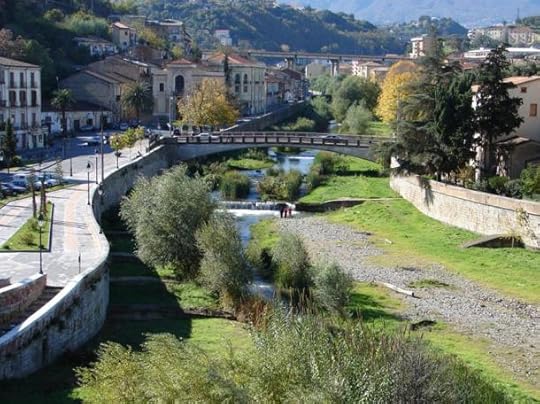 Alaric’s treasure is believed to be buried with his body somewhere near the confluence of two rivers in Cosenza, Italy. The River Crathis in Cosenza (
Public domain
)The Sack of RomeAlaric I (395 – 410 AD) was the first King of the Visigoths and leader of the army that sacked Rome in August 410, an act that played a significant role in the fall of the Western Roman Empire.The Huns had forced the Goths to seek refuge in the Eastern Roman Empire, but high taxes, starvation, and poor treatment from the Roman population caused the Goths to rebel. King Alaric led his troops on a rampage through the Balkans and into Italy, where they sacked Rome, the seat of the richest senatorial noble families and the centre of their cultural patronage. For three days, the Goths plundered the city, ransacking buildings, including homes of the wealthy, the treasury, and the mausoleums of Augustus and Hadrian. Alaric was said to have left the city with wagons containing two tons of gold, thirteen tons of silver, 4,000 silk tunics, 3,000 fleeces, and 3,000 pounds of pepper.After plundering the city, Alaric planned to march into Sicily and later Africa, but he never achieved these goals as he died soon later in 410 AD.
Alaric’s treasure is believed to be buried with his body somewhere near the confluence of two rivers in Cosenza, Italy. The River Crathis in Cosenza (
Public domain
)The Sack of RomeAlaric I (395 – 410 AD) was the first King of the Visigoths and leader of the army that sacked Rome in August 410, an act that played a significant role in the fall of the Western Roman Empire.The Huns had forced the Goths to seek refuge in the Eastern Roman Empire, but high taxes, starvation, and poor treatment from the Roman population caused the Goths to rebel. King Alaric led his troops on a rampage through the Balkans and into Italy, where they sacked Rome, the seat of the richest senatorial noble families and the centre of their cultural patronage. For three days, the Goths plundered the city, ransacking buildings, including homes of the wealthy, the treasury, and the mausoleums of Augustus and Hadrian. Alaric was said to have left the city with wagons containing two tons of gold, thirteen tons of silver, 4,000 silk tunics, 3,000 fleeces, and 3,000 pounds of pepper.After plundering the city, Alaric planned to march into Sicily and later Africa, but he never achieved these goals as he died soon later in 410 AD. The Sack of Rome by the Visigoths on 24 August 410 by J-N Sylvestre, 1890 (
Public domain
)The Death of King AlaricIt is not clear how Alaric died, but it is assumed that he either died from an illness or in battle during an enemy attack.According to the historian Jordanes, who wrote about the Goths in the sixth century, Alaric was buried along with the looted treasures in a tomb at the confluence of the Busento and Crathis rivers.“Turning from its course the river Busentus, near the city of Cosentia, they led a band of captives into the midst of its bed to dig out a place for his grave,” writes Jordanes in his book De Origine Actibusque Getarum (‘The Origin and Deeds of the Goths’). “In the depths of this pit they buried Alaric, together with many treasures, and then turned the waters back into their channel. And that none might ever know the place, they put to death all the diggers.”
The Sack of Rome by the Visigoths on 24 August 410 by J-N Sylvestre, 1890 (
Public domain
)The Death of King AlaricIt is not clear how Alaric died, but it is assumed that he either died from an illness or in battle during an enemy attack.According to the historian Jordanes, who wrote about the Goths in the sixth century, Alaric was buried along with the looted treasures in a tomb at the confluence of the Busento and Crathis rivers.“Turning from its course the river Busentus, near the city of Cosentia, they led a band of captives into the midst of its bed to dig out a place for his grave,” writes Jordanes in his book De Origine Actibusque Getarum (‘The Origin and Deeds of the Goths’). “In the depths of this pit they buried Alaric, together with many treasures, and then turned the waters back into their channel. And that none might ever know the place, they put to death all the diggers.”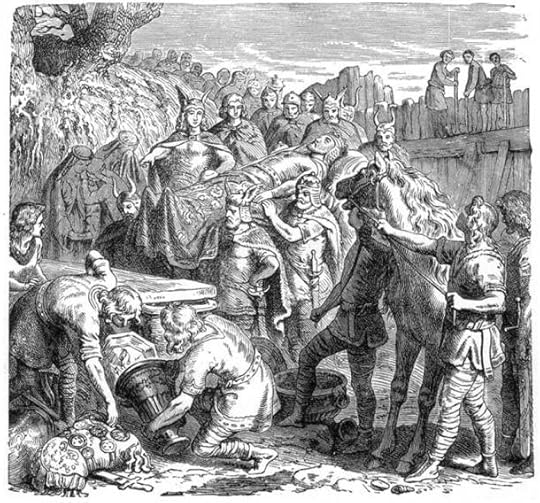 The burial of Alaric in the bed of the Busento River. 1895 wood engraving. (
Public domain
)The Search for Alaric’s TreasureDuring the mid-18th century, a huge project took place to unearth the tomb of Alaric, but nothing was found. Then, in the early 19th century, writer and traveller Alexandre Dumas visited Cosenza after a major earthquake had drained the Busento River. Dumas reported that numerous people began fervently digging for the Roman treasure, but again no treasure or tomb was unearthed.In the 20th century, the accounts of the treasure attracted the attention of Adolph Hitler and Heinrich Himmler, who ordered an extensive search for the hidden loot. But they too came back empty handed.The Telegraph reports that the search has now begun again, this time with the whole-hearted support of the Cosenza authorities."Historical sources and clues confirm that the treasure of Alaric was buried in Cosenza," Mario Occhiuto, the mayor of Cosenza, said in a statement [via The Telegraph]. “The treasure consisted of about 10 wagons full of gold and silver, and perhaps also the sacred Jewish candelabra, the Menorah.The town of Cosenza has commissioned a team of archaeologists to search for the treasure and is hoping that if the loot is found, it will attract hordes of tourists to the area.Featured image: Illustration from the 1920s depicting Alaric parading through Athens after conquering the city in 395 AD. (
Public domain
)
The burial of Alaric in the bed of the Busento River. 1895 wood engraving. (
Public domain
)The Search for Alaric’s TreasureDuring the mid-18th century, a huge project took place to unearth the tomb of Alaric, but nothing was found. Then, in the early 19th century, writer and traveller Alexandre Dumas visited Cosenza after a major earthquake had drained the Busento River. Dumas reported that numerous people began fervently digging for the Roman treasure, but again no treasure or tomb was unearthed.In the 20th century, the accounts of the treasure attracted the attention of Adolph Hitler and Heinrich Himmler, who ordered an extensive search for the hidden loot. But they too came back empty handed.The Telegraph reports that the search has now begun again, this time with the whole-hearted support of the Cosenza authorities."Historical sources and clues confirm that the treasure of Alaric was buried in Cosenza," Mario Occhiuto, the mayor of Cosenza, said in a statement [via The Telegraph]. “The treasure consisted of about 10 wagons full of gold and silver, and perhaps also the sacred Jewish candelabra, the Menorah.The town of Cosenza has commissioned a team of archaeologists to search for the treasure and is hoping that if the loot is found, it will attract hordes of tourists to the area.Featured image: Illustration from the 1920s depicting Alaric parading through Athens after conquering the city in 395 AD. (
Public domain
)
 The local and provincial administration of Cosenza in Italy has launched a plan to systematically search for the treasure hoard of Alaric, King of the Visigoths, who looted the riches during his sack of Rome in the 5th century. Italian archaeologists will be utilizing the latest technological innovations in their search for the treasure, which legend says was buried alongside Alaric somewhere near the confluence of two rivers in Cosenza. Adolph Hitler was obsessed with the goal of finding the hidden loot, but the Nazis never located it.
The local and provincial administration of Cosenza in Italy has launched a plan to systematically search for the treasure hoard of Alaric, King of the Visigoths, who looted the riches during his sack of Rome in the 5th century. Italian archaeologists will be utilizing the latest technological innovations in their search for the treasure, which legend says was buried alongside Alaric somewhere near the confluence of two rivers in Cosenza. Adolph Hitler was obsessed with the goal of finding the hidden loot, but the Nazis never located it. Alaric’s treasure is believed to be buried with his body somewhere near the confluence of two rivers in Cosenza, Italy. The River Crathis in Cosenza (
Public domain
)The Sack of RomeAlaric I (395 – 410 AD) was the first King of the Visigoths and leader of the army that sacked Rome in August 410, an act that played a significant role in the fall of the Western Roman Empire.The Huns had forced the Goths to seek refuge in the Eastern Roman Empire, but high taxes, starvation, and poor treatment from the Roman population caused the Goths to rebel. King Alaric led his troops on a rampage through the Balkans and into Italy, where they sacked Rome, the seat of the richest senatorial noble families and the centre of their cultural patronage. For three days, the Goths plundered the city, ransacking buildings, including homes of the wealthy, the treasury, and the mausoleums of Augustus and Hadrian. Alaric was said to have left the city with wagons containing two tons of gold, thirteen tons of silver, 4,000 silk tunics, 3,000 fleeces, and 3,000 pounds of pepper.After plundering the city, Alaric planned to march into Sicily and later Africa, but he never achieved these goals as he died soon later in 410 AD.
Alaric’s treasure is believed to be buried with his body somewhere near the confluence of two rivers in Cosenza, Italy. The River Crathis in Cosenza (
Public domain
)The Sack of RomeAlaric I (395 – 410 AD) was the first King of the Visigoths and leader of the army that sacked Rome in August 410, an act that played a significant role in the fall of the Western Roman Empire.The Huns had forced the Goths to seek refuge in the Eastern Roman Empire, but high taxes, starvation, and poor treatment from the Roman population caused the Goths to rebel. King Alaric led his troops on a rampage through the Balkans and into Italy, where they sacked Rome, the seat of the richest senatorial noble families and the centre of their cultural patronage. For three days, the Goths plundered the city, ransacking buildings, including homes of the wealthy, the treasury, and the mausoleums of Augustus and Hadrian. Alaric was said to have left the city with wagons containing two tons of gold, thirteen tons of silver, 4,000 silk tunics, 3,000 fleeces, and 3,000 pounds of pepper.After plundering the city, Alaric planned to march into Sicily and later Africa, but he never achieved these goals as he died soon later in 410 AD. The Sack of Rome by the Visigoths on 24 August 410 by J-N Sylvestre, 1890 (
Public domain
)The Death of King AlaricIt is not clear how Alaric died, but it is assumed that he either died from an illness or in battle during an enemy attack.According to the historian Jordanes, who wrote about the Goths in the sixth century, Alaric was buried along with the looted treasures in a tomb at the confluence of the Busento and Crathis rivers.“Turning from its course the river Busentus, near the city of Cosentia, they led a band of captives into the midst of its bed to dig out a place for his grave,” writes Jordanes in his book De Origine Actibusque Getarum (‘The Origin and Deeds of the Goths’). “In the depths of this pit they buried Alaric, together with many treasures, and then turned the waters back into their channel. And that none might ever know the place, they put to death all the diggers.”
The Sack of Rome by the Visigoths on 24 August 410 by J-N Sylvestre, 1890 (
Public domain
)The Death of King AlaricIt is not clear how Alaric died, but it is assumed that he either died from an illness or in battle during an enemy attack.According to the historian Jordanes, who wrote about the Goths in the sixth century, Alaric was buried along with the looted treasures in a tomb at the confluence of the Busento and Crathis rivers.“Turning from its course the river Busentus, near the city of Cosentia, they led a band of captives into the midst of its bed to dig out a place for his grave,” writes Jordanes in his book De Origine Actibusque Getarum (‘The Origin and Deeds of the Goths’). “In the depths of this pit they buried Alaric, together with many treasures, and then turned the waters back into their channel. And that none might ever know the place, they put to death all the diggers.” The burial of Alaric in the bed of the Busento River. 1895 wood engraving. (
Public domain
)The Search for Alaric’s TreasureDuring the mid-18th century, a huge project took place to unearth the tomb of Alaric, but nothing was found. Then, in the early 19th century, writer and traveller Alexandre Dumas visited Cosenza after a major earthquake had drained the Busento River. Dumas reported that numerous people began fervently digging for the Roman treasure, but again no treasure or tomb was unearthed.In the 20th century, the accounts of the treasure attracted the attention of Adolph Hitler and Heinrich Himmler, who ordered an extensive search for the hidden loot. But they too came back empty handed.The Telegraph reports that the search has now begun again, this time with the whole-hearted support of the Cosenza authorities."Historical sources and clues confirm that the treasure of Alaric was buried in Cosenza," Mario Occhiuto, the mayor of Cosenza, said in a statement [via The Telegraph]. “The treasure consisted of about 10 wagons full of gold and silver, and perhaps also the sacred Jewish candelabra, the Menorah.The town of Cosenza has commissioned a team of archaeologists to search for the treasure and is hoping that if the loot is found, it will attract hordes of tourists to the area.Featured image: Illustration from the 1920s depicting Alaric parading through Athens after conquering the city in 395 AD. (
Public domain
)
The burial of Alaric in the bed of the Busento River. 1895 wood engraving. (
Public domain
)The Search for Alaric’s TreasureDuring the mid-18th century, a huge project took place to unearth the tomb of Alaric, but nothing was found. Then, in the early 19th century, writer and traveller Alexandre Dumas visited Cosenza after a major earthquake had drained the Busento River. Dumas reported that numerous people began fervently digging for the Roman treasure, but again no treasure or tomb was unearthed.In the 20th century, the accounts of the treasure attracted the attention of Adolph Hitler and Heinrich Himmler, who ordered an extensive search for the hidden loot. But they too came back empty handed.The Telegraph reports that the search has now begun again, this time with the whole-hearted support of the Cosenza authorities."Historical sources and clues confirm that the treasure of Alaric was buried in Cosenza," Mario Occhiuto, the mayor of Cosenza, said in a statement [via The Telegraph]. “The treasure consisted of about 10 wagons full of gold and silver, and perhaps also the sacred Jewish candelabra, the Menorah.The town of Cosenza has commissioned a team of archaeologists to search for the treasure and is hoping that if the loot is found, it will attract hordes of tourists to the area.Featured image: Illustration from the 1920s depicting Alaric parading through Athens after conquering the city in 395 AD. (
Public domain
)
Published on October 20, 2015 06:00
History Trivia - First Crusaders arrive in Antioch
October 20
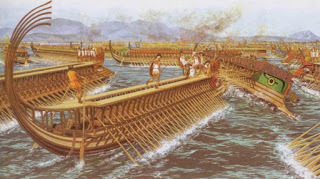
480 BC The Greeks defeated the Persians in a naval battle at Salamis, an island in the Saronic Gulf near Athens. It marked the high-point of the second Persian invasion of Greece which had begun in 480 BC.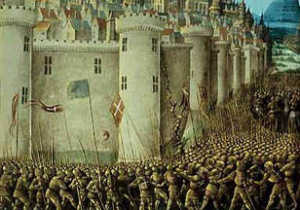
1097 First Crusaders arrived in Antioch. The first siege, by the crusaders against the Muslim city, lasted from October 21, 1097, to June 2, 1098.
1524 Thomas Linacre, physician and classical scholar, who founded the Royal College of Physicians in London died.

480 BC The Greeks defeated the Persians in a naval battle at Salamis, an island in the Saronic Gulf near Athens. It marked the high-point of the second Persian invasion of Greece which had begun in 480 BC.

1097 First Crusaders arrived in Antioch. The first siege, by the crusaders against the Muslim city, lasted from October 21, 1097, to June 2, 1098.

1524 Thomas Linacre, physician and classical scholar, who founded the Royal College of Physicians in London died.
Published on October 20, 2015 02:00
October 19, 2015
History Trivia - Battle of Sama - Scipio defeats Hannibal's army
October 19
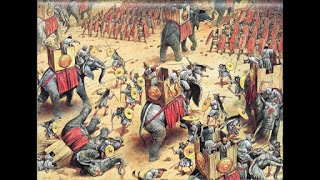
202 BC, the Romans under Scipio Africanus defeated Hannibal's army of Carthaginians and Numidians in the Battle of Sama in the Second Punic War.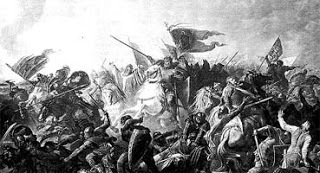
439 Gaiseric, King of the Vandals, seized the Roman city of Carthage, and made it his capital.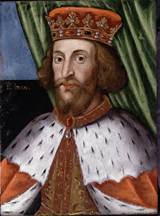
1216 King John of England died at Newark-on-Trent and was succeeded by his nine-year-old son Henry.

202 BC, the Romans under Scipio Africanus defeated Hannibal's army of Carthaginians and Numidians in the Battle of Sama in the Second Punic War.

439 Gaiseric, King of the Vandals, seized the Roman city of Carthage, and made it his capital.

1216 King John of England died at Newark-on-Trent and was succeeded by his nine-year-old son Henry.
Published on October 19, 2015 01:00



